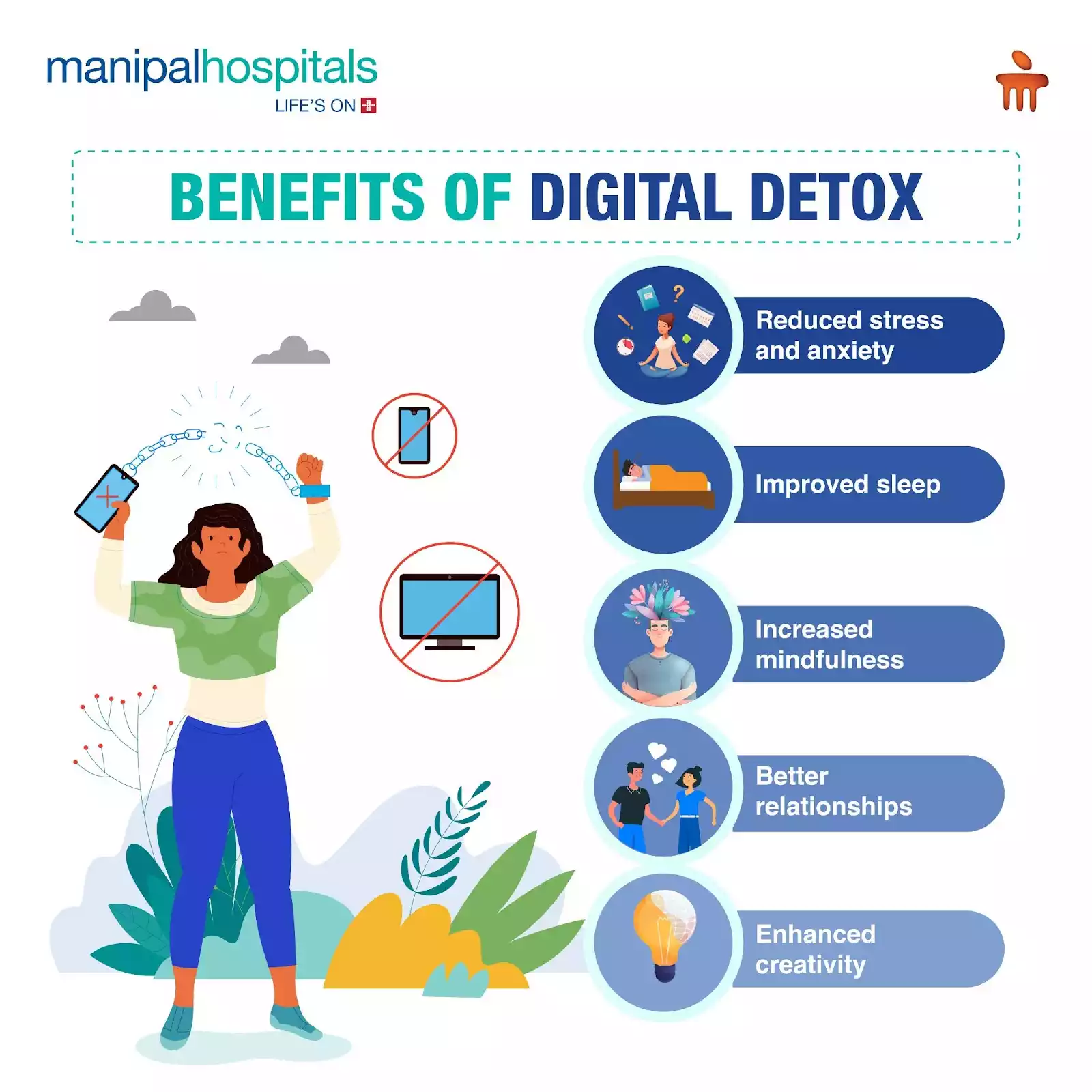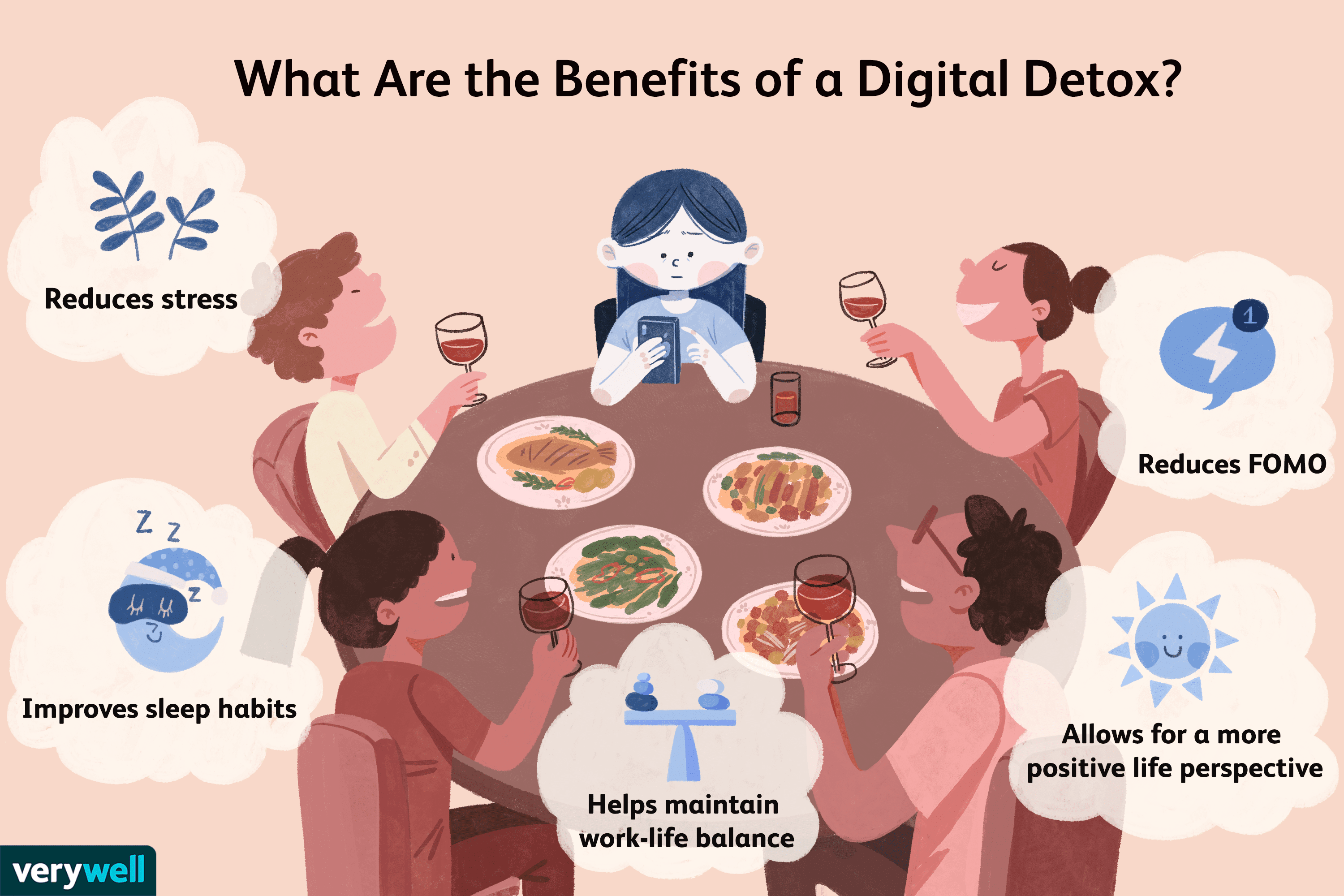Digital Detox for Mental Health: How Unplugging Can Improve Your Well-being
In our hyper-connected world, it’s easy to feel overwhelmed by the constant buzz of notifications, emails, and social media updates. As we spend more time on our devices, the impact on our mental health can be profound. Enter the concept of a digital detox—a period of intentional disconnection from electronic devices, especially those that disrupt our peace of mind. If you’re feeling mentally drained or anxious from the constant digital noise, a digital detox can offer a much-needed respite.
In this article, we will explore how digital detox can improve your mental health, the benefits of disconnecting from technology, and practical steps for starting your own detox journey.
:max_bytes(150000):strip_icc()/why-and-how-to-do-a-digital-detox-4771321-FINAL-d129381fa4524c5db792951fd9b987d2.png)
What is a Digital Detox?
A digital detox involves taking a break from technology, especially social media and other digital platforms, to focus on activities that don’t involve screens. This intentional disconnection can range from a few hours to several days and helps restore balance in your life. The goal is not to eliminate technology entirely but to reduce the overwhelming influence it can have on your mental well-being.
With the increasing reliance on smartphones, computers, and other devices, many individuals find that they’re constantly plugged in, leading to heightened stress, anxiety, and burnout. Taking a digital detox can be a powerful tool to combat these effects and reset your mind.
Why a Digital Detox is Crucial for Mental Health
In our digital age, the line between work, socializing, and personal time is often blurred. Constant exposure to digital stimuli can negatively impact your mental health in several ways:
1. Digital Overload and Mental Fatigue
Our brains are not designed to process the vast amounts of information we encounter daily on digital platforms. The constant need to stay updated, reply to emails, and scroll through social media feeds can lead to mental exhaustion and information overload. This overload can manifest as feelings of being drained, stressed, or anxious.
2. Sleep Disturbances
Exposure to blue light emitted from screens, especially before bedtime, disrupts the production of melatonin, the hormone responsible for regulating sleep. As a result, many people experience poor-quality sleep, which in turn exacerbates mental health issues like anxiety and depression.
3. Increased Stress and Anxiety
The pressure to stay connected and respond instantly to messages or emails can elevate stress. Social media, in particular, can contribute to feelings of inadequacy or anxiety, as individuals compare their lives to the seemingly perfect lives of others. A digital detox provides the opportunity to break this cycle and focus on self-care and present-moment awareness.
4. Decreased Attention Span and Productivity
Constant notifications and distractions make it difficult to focus on important tasks. This fragmented attention leads to decreased productivity, heightened stress, and frustration. A break from technology helps reset your ability to focus and enhances mental clarity.
The Mental Health Benefits of a Digital Detox
Taking a digital detox can have transformative effects on your mental well-being. Here are some of the key mental health benefits of disconnecting from technology:
1. Reduced Stress and Anxiety
Disconnecting from technology allows you to reclaim your time and mental energy. Without constant notifications, you can engage in activities that bring you joy and relaxation, such as reading, exercising, or spending time with loved ones. These activities help reduce stress and improve your overall mood.
2. Improved Sleep
A digital detox, especially before bedtime, can significantly improve the quality of your sleep. By eliminating screen time in the evening, you give your body and mind a chance to unwind, leading to more restful and rejuvenating sleep.
3. Enhanced Focus and Productivity
When you’re not constantly distracted by your phone or computer, your brain can focus on one task at a time. A digital detox helps you regain your ability to concentrate, which can lead to improved productivity, creativity, and overall cognitive function.
4. Better Relationships
Spending less time on screens means more time to connect with the people around you. A digital detox allows you to engage in face-to-face conversations, strengthening relationships and improving your emotional well-being.
5. Mental Clarity and Emotional Reset
Unplugging from technology gives your brain the opportunity to recharge. It can help you gain perspective, reflect on your goals, and feel more connected to the present moment, leading to mental clarity and emotional balance.
How to Start a Digital Detox for Mental Health
If you’re ready to disconnect and prioritize your mental health, follow these simple steps to begin your digital detox journey.
Step 1: Set Clear Intentions
Before starting your detox, it’s important to define your goals. Why do you want to take a break from technology? Are you looking to reduce stress, improve sleep, or simply regain more time in your day? Setting clear intentions will help you stay motivated and committed.
Some common goals for a digital detox include:
- Reducing anxiety and stress
- Improving focus and productivity
- Getting better sleep
- Spending more time with loved ones
Step 2: Identify Your Digital Habits
Take a moment to assess your digital habits. Which devices or apps are you using the most? Are there specific platforms that cause you stress or anxiety? Identifying these triggers will help you understand where you need to set boundaries.
Step 3: Set Boundaries
Once you’ve identified your digital habits, set clear boundaries for your detox. This can include:
– Turning off non-essential notifications
– Setting screen time limits for social media apps
– Designating technology-free zones in your home (e.g., no phones at the dinner table)
– Allocating specific times of day for checking emails or social media
Step 4: Engage in Offline Activities
During your detox, fill your time with offline activities that promote relaxation and well-being. Consider activities like:
– Going for a walk or hike in nature
– Reading a book or listening to a podcast
– Engaging in hobbies such as painting, cooking, or playing a musical instrument
– Spending quality time with family or friends

Step 5: Gradually Disconnect
If the idea of a full detox feels overwhelming, start small. Begin with a few hours each day, gradually increasing your disconnect time. For example:
– Set a rule to avoid screens during meals or for one hour before bed.
– Try a full digital detox for a weekend and see how you feel.
Step 6: Practice Mindfulness
While on your detox, focus on being present in the moment. Practice mindfulness through activities like meditation, deep breathing exercises, or journaling. This helps you reconnect with your thoughts and emotions, which is essential for mental well-being.
Step 7: Reflect and Evaluate
After completing your digital detox, take time to reflect on your experience. How did it make you feel? Did you notice any improvements in your mental health, productivity, or relationships? Evaluating your experience will help you understand the positive impact of the detox and decide if it’s something you want to continue incorporating into your life.

Frequently Asked Questions (FAQs)
Q1: How long should my digital detox last?
A1: The length of your digital detox depends on your goals and comfort level. You can start with a few hours or a weekend and gradually increase the duration if desired.
Q2: Can I still use my phone during a digital detox?
A2: Yes, you can still use your phone for essential tasks like calls or emergency situations. However, try to avoid using it for non-essential activities like social media or endless browsing.
Q3: Will a digital detox improve my mental health immediately?
A3: While some benefits, like reduced stress and improved focus, can be felt after just a few hours or days, the full mental health benefits of a digital detox may take a bit longer to manifest. Regular detox practices can lead to lasting improvements over time.
Q4: How often should I do a digital detox?
A4: It’s beneficial to incorporate digital detoxes into your regular routine. Many people find success with a weekly digital detox, or you could schedule longer breaks every few months.
Conclusion
A digital detox is an effective way to improve your mental health by reducing stress, improving sleep, enhancing focus, and fostering stronger relationships. By setting clear intentions and gradually disconnecting from digital devices, you can restore balance to your life and experience the mental clarity and emotional well-being you deserve.
Take the first step towards a healthier, more mindful lifestyle by embracing a digital detox today. Your mind and body will thank you!

